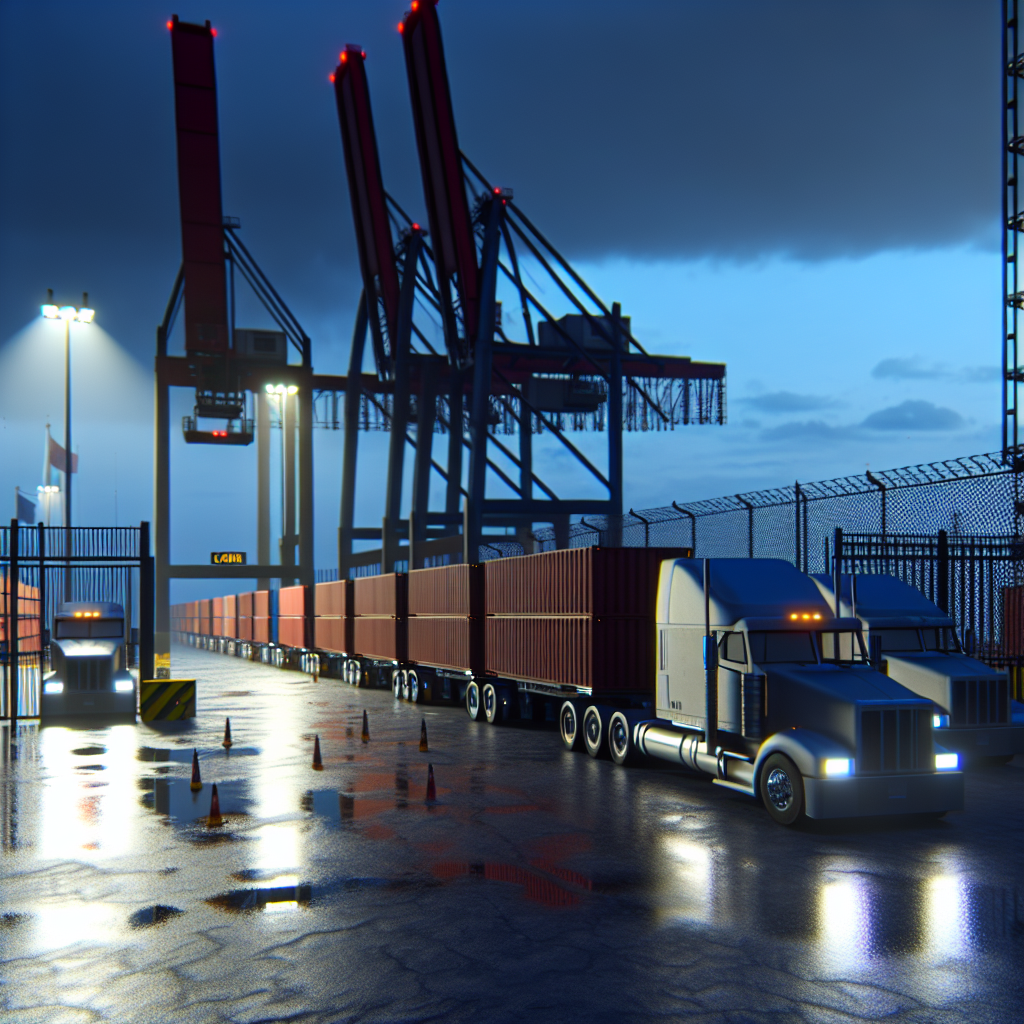Washington has moved from warning shots to implementation. On October 10, the Office of the U.S. Trade Representative said it will impose a 100% tariff on specified ship-to-shore container cranes tied to China and extend steep duties to other cargo-handling gear. For terminal operators, that instantly turns tomorrow’s crane orders into far more expensive capex — and for drayage carriers, it raises the odds of longer queues and higher fees if projects slip or equipment ages in place.
Layered on top of that move, President Donald Trump announced an additional across-the-board 100% tariff on imports from China effective November 1, 2025, unless policy changes in Beijing intervene. If that blanket duty takes effect, it would stack on existing measures and push effective charges on China-linked port gear dramatically higher. Shippers and their motor-carrier partners should plan for a costlier peak season handoff and more frequent schedule resets at big gateways.
One immediate bright spot for truckers: the U.S. opted against slapping duties on intermodal shipping containers, a step officials said could have boomeranged onto domestic carriers. But the government did target truck-facing assets — confirming the 100% tariff will cover intermodal chassis and proposing additional tariffs of up to 150% on certain cargo-handling equipment and parts such as rubber-tired gantry cranes. Those inputs shape terminal productivity and yard fluidity; higher costs here tend to resurface later as terminal fees and per-diem adjustments borne across the drayage chain.
China is answering on a parallel front. Starting October 14, Beijing plans to levy port fees on U.S.-linked vessels — mirroring the American schedule — with charges escalating annually. While the target is ships, the ripple hits landside: altered rotations and bunching at U.S. ports can cascade into late gates, tighter appointment windows, and longer turn times for drivers.
There were other late-week adjustments that matter for freight flows. USTR set the fee for operators of foreign-built vehicle carriers at $46 per net ton beginning October 14, scrapped a previously floated LNG-export license restriction tied to vessel sourcing, and said it is weighing carve-outs and deferrals for some service fees through December 10 while it reviews fresh comments. The agency also reiterated it will move ahead with the 100% crane tariff and solicit input on even higher rates for other equipment. For trucking, that means less uncertainty around ro/ro and energy cargo policy in the near term — but still a firm trajectory toward pricier, China-linked port machinery.
What it means on the ground for trucking companies:
– Expect stickier dwell and slower vessel working if ports defer crane replacements. That translates into longer driver wait times, more missed turns, and tighter appointment capacity — especially at the largest coastal gateways where ultra-large ships depend on the biggest cranes.
– Watch chassis economics. With chassis and some components in tariff crosshairs, leasing and per-diem rates can creep up as providers absorb higher procurement costs. Scrutinize free-time, detention/demurrage, and accessorial terms now rather than at renewal.
– Budget for pass-throughs. Terminals often recoup equipment and operating cost shocks via tariff filings and congestion surcharges. Shippers may lean on dray carriers for flexibility; build cushions into rate bids and route plans.
– Diversify routings and mode where practical. If vessel operators shuffle rotations to navigate new fees in both countries, volume may swing between ports or to rail-served inland hubs. Carrier networks that can pivot will protect service levels.
– Calendar the policy dates. Oct. 14 brings fee changes and Chinese counter-fees; Nov. 1 is the earliest start for the additional 100% U.S. tariff on all China imports. Those are real-world triggers for schedule volatility and yard congestion.
The bottom line: the latest U.S. action turns cybersecurity and industrial policy concerns about Chinese-made cranes into immediate price signals. Ports will either pay up or wait — and either path points to more variability for the drayage community this fall.
Sources: FreightWaves, United States Trade Representative, Reuters, AP News
This article was prepared exclusively for TruckStopInsider.com. Republishing is permitted only with proper credit and a link back to the original source.





